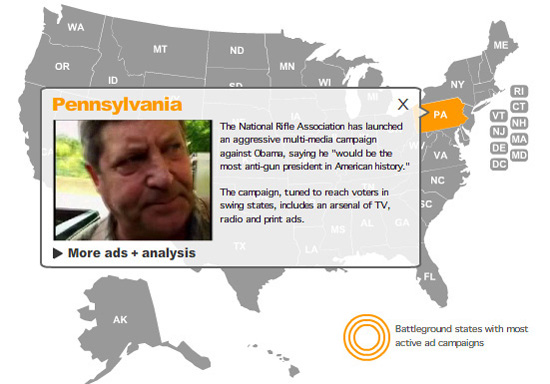Web of Influence

This was one of the first Flash projects I designed. The interactive chart shows which 2008 presidential candidates had fundraisers who also worked as lobbyists for foreign governments. It ran with a story published on ABCNews.com.

This was one of the first Flash projects I designed. The interactive chart shows which 2008 presidential candidates had fundraisers who also worked as lobbyists for foreign governments. It ran with a story published on ABCNews.com.
When others come to your paradise to find solitude, where do you find yours? This longing has taken me from my hometown on Oahu into the jungles of Central America and to islands in Southeast Asia. A few years ago, I finally found what I was looking for—a mere island hop from where I started. The place was Kauai’s Na Pali Coast. I wrote this travel feature about a kayak trip down the Na Pali Coast for the January/February 2007 issue of California magazine.
A DNA database created by the UC Berkeley Human Rights Center helps families in El Salvador locate children lost during the 12-year civil war—many children were adopted internationally. Similar DNA databases have been created to locate the lost, or desaparecidos, in Argentina and Guatemala, and those gone missing in Rwanda, the former Yugoslavia, and Iraq. This article ran in the September/October 2006 issue of California magazine.

During the 2008 election, the Center for Investigative Reporting teamed up with National Public Radio to track independent groups pouring millions of dollars into election ads for the presidential and Senate campaigns.
I designed this Flash map for CIR, which houses streaming video ads and information about the groups spending the most money in each state. Data for each state is contained in text files, allowing for easy updating. The map acted as a portal leading to a campaign finance blog on NPR.org.
Airport security screening relies heavily on metal detection devices; screening for explosives in liquids has proved to be elusive—most liquids are simply confiscated. While researching degenerative diseases such as Parkinson’s and cancer, UC Berkeley chemist Christopher Chang developed a chemical sensor that identifies hydrogen peroxide—which living cells excrete when stressed. Hydrogen peroxide is also the main ingredient in a popular homemade explosive. Chang quickly devised a plan to convert his “peroxysensor” for use in anti-terrorism security screening.
A dragonfly’s eye has thousands of tiny lenses, each the size of a pinprick. They can see in all directions at the same time. Bioengineering Professor Luke Lee and his team developed an artificial compound eye similar to a dragonfly’s—with 360-degree vision—that could aid in military surveillance or medical imaging. Lee’s specialty is what he calls “biologically inspired systems.” This article appeared in the May/June issue of California magazine.
What you can’t smell can hurt you. That’s the idea behind electronic noses—sensors that detect harmful gases, such as ammonia or carbon monoxide, at much lower levels than the human nose can. Commercial e-noses are used in the food industry, in hospitals, and on NASA space shuttles, but they have generally been too expensive for consumer use. But Vivek Subramanian, an associate professor of electrical engineering at UC Berkeley, is building cheap e-noses that can be printed quickly and cheaply with plastic “ink.”
A solar burst is the sudden ejection of particles from the sun’s corona—responsible for the ghostly illuminations known as aurora borealis, or “Northern Lights.” In a strange collaboration with the Space Sciences Lab at UC Berkeley, composer Roberto Morales is transforming satellite recordings of solar bursts into music. This article ran in the July/August 2006 issue of California magazine.
Gilbert Lum’s volunteer garden project on the barren Diamond Head cliffside has brought him awards and local fame, but he said he gets the most satisfaction simply from watching things grow.
This feature article was published in The Honolulu Advertiser on August 6, 2004. Read the article online.
During the campaign season, media noise intensifies: Seeking votes, candidates crank up the volume with ads and appearances until the onslaught of information is difficult to ignore. Yet in the 2000 presidential election, Census figures show, only 22 percent of Hawai’i residents 18 to 24 years old bothered to vote, the lowest such turnout in any state.
This feature article was published in The Honolulu Advertiser on August 11, 2004. Read the article online.